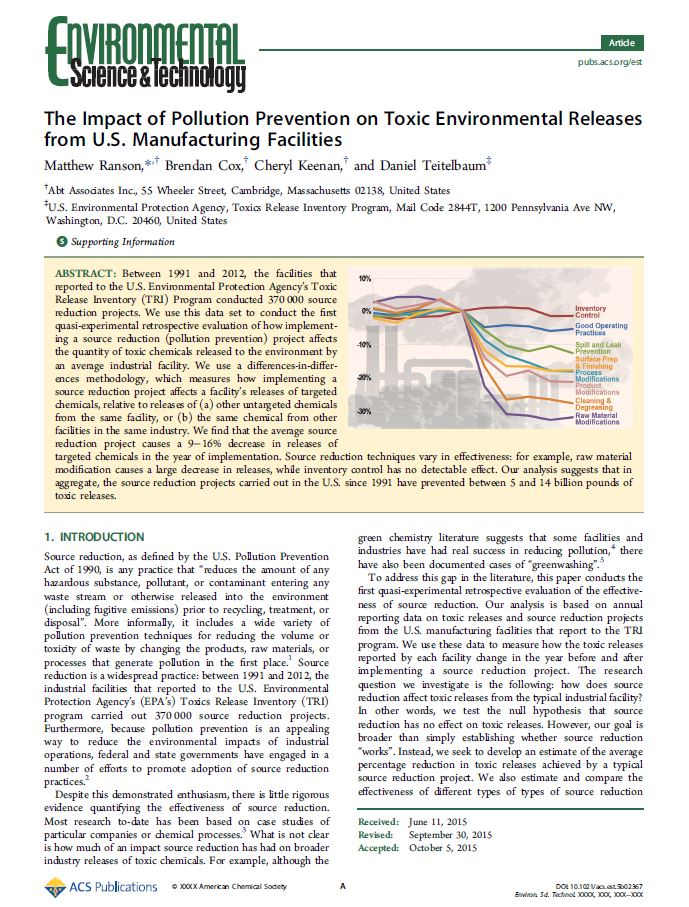Between 1991 and 2012, the facilities that reported to the U.S. Environmental Protection Agency’s Toxic Release Inventory (TRI) Program implemented 370, 000 source reduction activities. These data were used to conduct the first quasi-experimental retrospective evaluation of how implementing a source reduction (pollution prevention) activity affects the quantity of toxic chemicals released to the environment by an average industrial facility. A differences-in-differences methodology, which measures how implementing a source reduction activity affects a facility’s releases of targeted chemicals, relative to releases of (a) other untargeted chemicals from the same facility, or (b) the same chemical from other facilities in the same industry. It was found that the average source reduction activity causes a 9−16% decrease in releases of targeted chemicals in the year of implementation. Source reduction techniques vary in effectiveness: for example, raw material modification causes a large decrease in releases, while inventory control has no detectable effect. The analyses indicate that in aggregate, the source reduction activities carried out in the U.S. from 1991 through 2012 have prevented between 5 and 14 billion pounds of releases of toxic chemicals into the environment.
